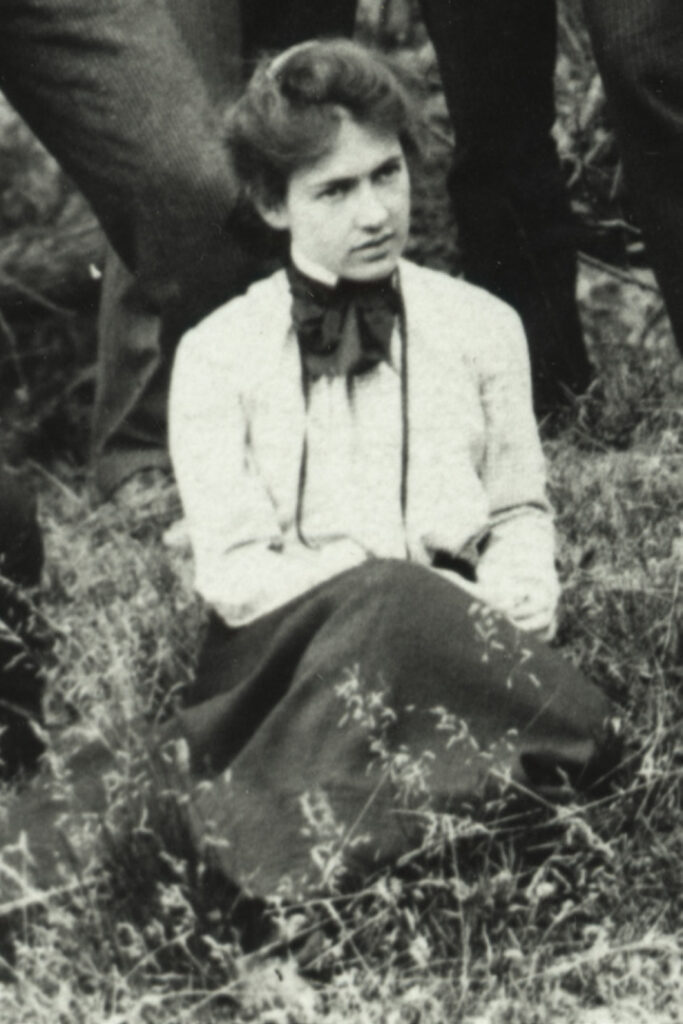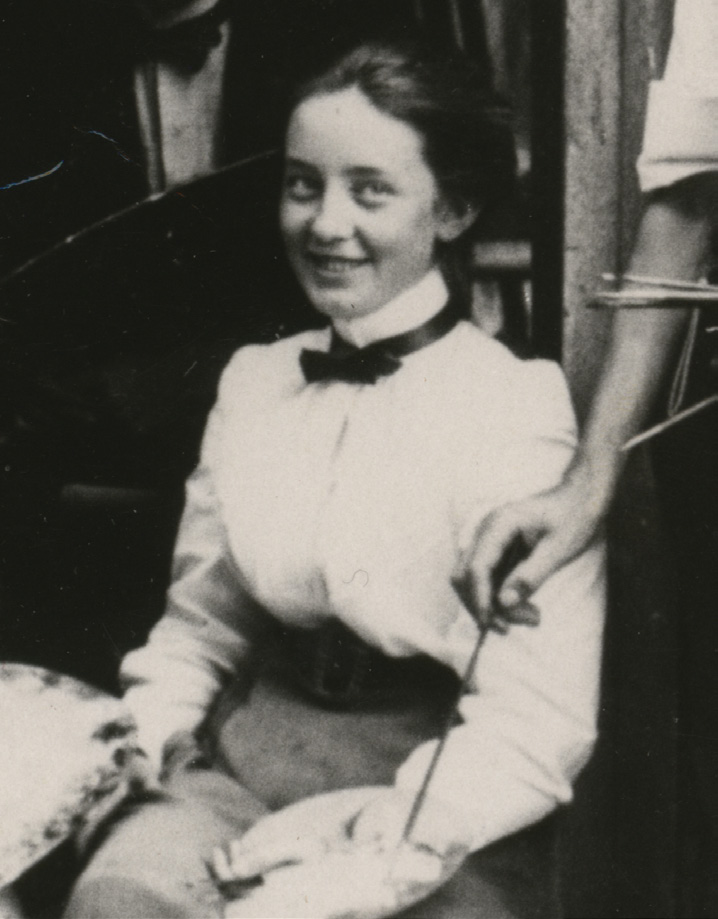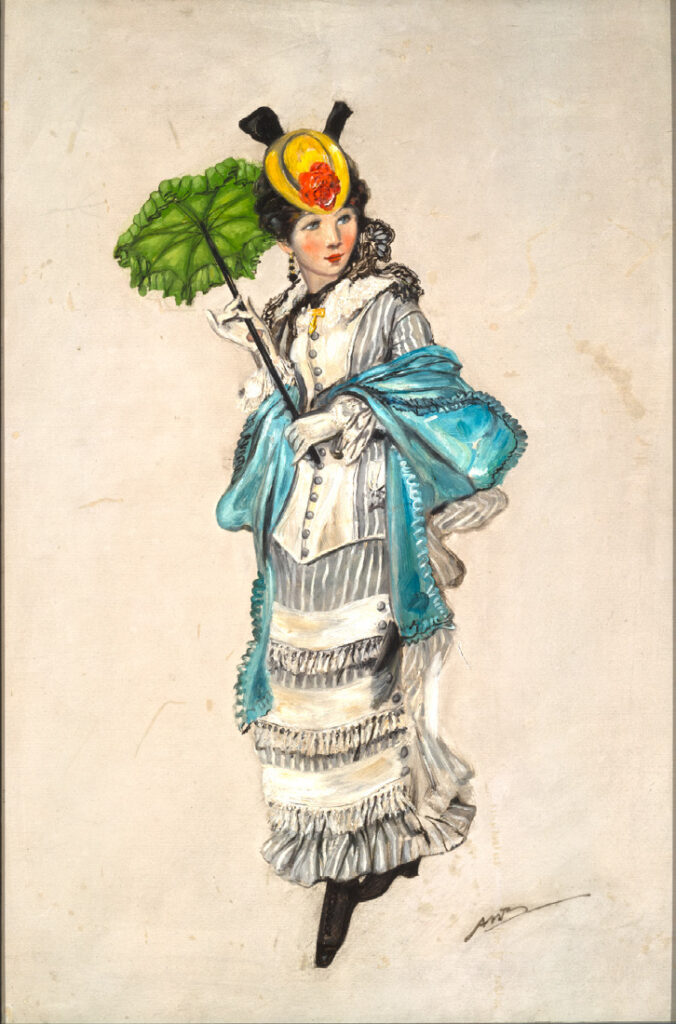

In William Dean Howells’ 1890 novel A Hazard of New Fortunes, an entrepreneur invites another businessman to join him in founding a magazine. Asked if he plans to include illustrations, the prospective publisher answers “My dear boy!… Do I look like the sort of lunatic who would start a thing in the twilight of the nineteenth century without illustrations?” His response alludes to the popularity of illustrated publications, the outcome of new technology, especially in color printing, expanded rail and postal distribution, and widening literacy. Editors competed for artists who could create enticing images on deadline. Avid readers flocked to bookstores, libraries, and newsstands, and drove magazine subscriptions into the millions.
Anna and Ethel Betts were born in the 1870s to Philadelphia medical doctor Thomas Betts and his wife Alice Whelan. We know little about their youth until Anna and then Ethel enrolled in the art school of the city’s prestigious Pennsylvania Academy of the Fine Arts (PAFA). The instruction was rigorous and conservative. Although the sisters may not have yet defined their career aims, the teaching fostered a naturalistic realism that would serve them well in illustration. Anna also studied in Paris with painter Gustave-Claude-Étienne Courtois, known for interior scenes of elegant women in fashionable dress and jewelry.
By the mid-1890s, the divergence between fine art and illustration was pronounced.
One critic complained that “the reading public has suddenly become picture-mad.” PAFA (The Pennsylvania Academy of the Fine Arts) insisted that illustration was not fine art and rejected an offer from nationally known illustrator Howard Pyle to teach the subject. But the newly-founded, more innovative Drexel Institute for Art, Science, and Industry (now Drexel University) welcomed Pyle. Anna and Ethel joined his classes there. At $12 per term (about $430 today), it’s likely that Dr. and Mrs. Betts provided their daughters’ tuition. By 1900, Pyle established his own tuition-free school in Wilmington, Delaware, inviting only the most promising students, including the Betts sisters. Well-grounded by their PAFA studies, they absorbed Pyle’s techniques for capturing the gist of a text not just in natural actions, convincing expressions, and accurate costumes but with emotive power, too.

“She ran away so quickly that he could not overtake her,” c. 1909, for “Cinderella,” in Fairy Tales from Grimm (New York: Barse and Hopkins, 1909). Edited with an introduction by Hamilton W. Mabie. Oil on canvas. 25″ x 18½.” Delaware Art Museum, Gayle and Alene Endowment Fund, 1989
Ethel’s mastery of bright colors, bold patterns, lively characters, and attention to nature made her a favorite of children’s authors. In 1909, she illustrated Fairy Tales from Grimm for publishers Barse and Hopkins, who advertised “handsome editions of popular classics.” In this variant of Cinderella, one of many, a rich girl reduced to servitude by her abusive stepmother and stepsisters entreats the spirit of her dead mother for a dress to wear to the ball where the prince will select a wife. The magical gift is a gown and slippers of “gold and silver… splendid and glittering.”
For her single full-color illustration, Ethel chose Cinderella’s hurried departure from the ball, when she loses a gold slipper, afraid that the smitten prince will discover her lowly position. In her haste, the shimmering brocade fringed skirt spreads out across the steps and her veil catches the wind. Her fan and green-and-white fabric bag escape their lavender cord. Ethel would have known many Cinderella images of recent decades by artists who presented Cinderella in multi-tiered, ribbons-and-lace finery, with ornate hair styles, set amid royal trappings. Ethel’s portrayal is modest in comparison. Symmetrical plants and architecture offer minimal distraction. Cinderella’s natural silhouette, free-flowing hair, and simple jewelry may have had its own fashion appeal for American girls and the mothers who read to them. Her dark eyes are the picture’s emotional focus, as she glances around fearfully, on the lookout for the determined prince. Vicarious experience of her dangerous adventure may have beguiled young imaginations more than opulent surroundings.
Anna’s imagery for books and magazines often featured historic costumes. Lady of the 1870s is a study for an unpublished illustration for “The Whims of Fashion” in the April 1917 issue of The Century Magazine. Fashion journalist Roger Boutet de Monvel’s humorous essay recounts “strange..and surprising” past styles of dress. Anna’s nine final published illustrations encompass several centuries. She—like Boutet de Monvel—probably looked through prints, photographic albums, and the fashion pages of old magazines to create this image.

“Lady of the 1870s,” study for “The Whims of Fashion,” by Roger Boutet de Monvel, in The Century Magazine, April 1917. Oil on board. 23¼” x 15¼.” Delaware Art Museum, Gift of Phyllis and Norman Aerenson, 2021
The mid-19th-century invention of synthetic dyes popularized vibrant colors. The young woman’s teal shawl (covering a hint of low, “princess” bustle), deep green parasol, and yellow-and-red hat enliven the black, white, and gray of her costume. Glowing red tones draw attention to her face. Stripes and buttons emphasize the vertical line of her “cuirass” bodice, the tight-fitting jacket ending in a point below the waist that was advertised as “the natural form” in the mid-1870s. Skirts narrowed during the decade but often kept their fringes and ruffles. The compact straw hat with its black ribbons, tilted fashionably forward, recalls one commentator’s remark that “bonnets can find but very little place upon the head.” Throughout the image, Anna’s handling of paint is fluid and graceful. The shawl’s colors range from deep blues and greens to almost white; its dark and light edges are continuous, calligraphic brushstrokes. Anna captures a stylish young woman’s spirit in the fingers twirling around her parasol, mid-step as her alert blue eyes dart to the side.
Ethel limited her commercial art after her marriage in 1909, though she produced several House and Garden covers and continued to exhibit her work. She and Anna both won bronze medals at the art exhibition of the 1915 Panama Pacific Exposition in San Francisco.
Anna worked steadily into the mid-1920s, when failing eyesight ended her career. She taught art at a boys’ school in Pennsylvania until her retirement in the 1940s, when she re-joined Ethel in Philadelphia. Anna died in February 1959, followed by Ethel six months later. They are buried side by side in their native city. G&S
© Mary F. Holahan 2023





Leave a Comment